What are peat humus tablets, their advantages, disadvantages, application
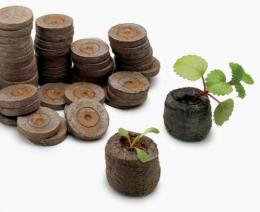
When it comes to obtaining planting material, many gardeners, flower growers, and simply lovers of certain plants try to grow it on their own. More recently, the first home for a plant was a yogurt cup or a tetra-pack of juice or milk adapted for a seedling pot.
It is clear that, if desired, you can grow seedlings and in such a container, the less the industry does not stand still. All over the world, the production of pots for seedlings of various sizes and shapes has been launched. In addition, peat humus tablets can now be found more and more often in garden stores. Let's try to figure out what they are and how they can facilitate the process of obtaining healthy planting material.
Content:
What are peat humus tablets?
These products got their name because of their tablet-like shape and filler material. To make the product round, a fairly long cylindrical sleeve is made from thick paper. Then it is cut into cylinders with a small height. This is the form for filling with peat. Sometimes, instead of paper, a special mesh made of organic materials is used.
Such tablets in a grid are produced by the well-known company Jiffi. The diameter of peat tablets may vary.As a rule, the smallest products have a diameter of no more than 2.5 cm, and the largest - 7 cm.
The size of the tablets is selected in accordance with the size of the seeds and the time of growth of the seedling in them. For the smallest seeds, such as those of petunias, tobacco, strawberries, the smallest tablets are suitable, for seedlings of peppers, tomatoes, eggplant - medium, for cedar pines and other crops with large seeds, tablets of large diameter are desirable. In addition, vegetative parts of plants, such as violet leaves, can be rooted on tablets.
Sphagnum peat, which serves as the main filler for seedling tablets, undergoes special treatment. As a result, tablets with neutral and acidic reactions are produced. Peat is also additionally enriched with minerals that young plants need.
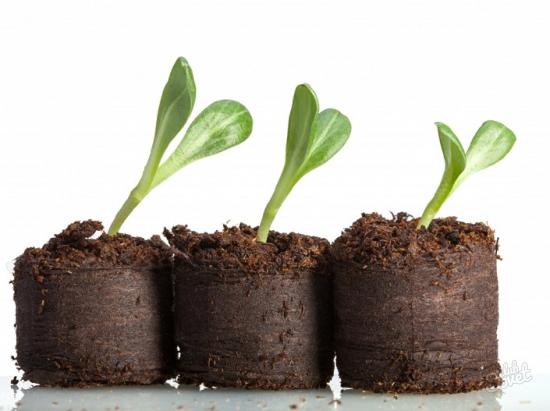
The paper shell can protect seeds and seedlings from fungal infections, as it is treated with fungicidal agents. The question arises, what happens to the paper cylinder when the plant is transplanted into the soil? It turns out that it simply dissolves in the ground, without at all interfering with the growth of roots and the entire plant.
It is clear that purchasing peat tablets will require material expenses. Many plant growers will think that this is an extra expense, since you can take completely free plastic cups from food products. What are the advantages and disadvantages of growing seedlings in tablets, and are they worth spending money on?
Pros and cons of peat humus tablets
Before moving on to the positive and negative aspects of using tablets, I would like to say a few words to the supporters of free yogurt cups for growing seedlings. It just seems like they are free. After all, before planting, they need to be washed well so that food residues do not become a breeding ground for pathogenic microorganisms.
To thoroughly wash, you will have to spend detergents, hot water, physical effort and time. Only after these not-so-minor expenses will the cups be suitable for growing seedlings.
Pros of peat tablets:
- breathability
- content of essential minerals for seed germination and seedling development
- ease of use throughout the entire process from sowing to planting in the ground
- water permeability
- good seed germination and rapid growth
- plants are relieved of stress during transplantation
The disadvantages include:
- the need to take into account plant requirements for soil reaction
- material costs
- ensuring good watering transplantation into the soil to allow the top layer to dissolve
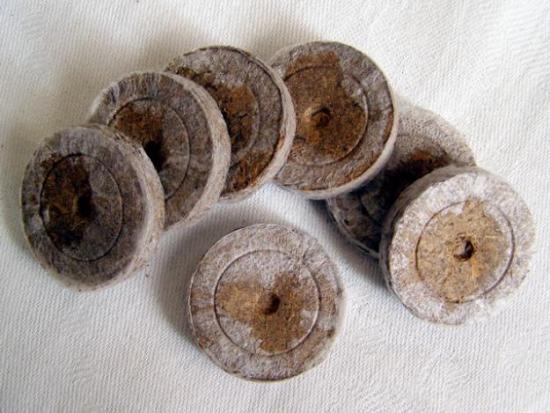
It is important to note that if you follow the growing conditions, seedlings in tablets sprout and develop better than in simple pots or boxes.
How to use peat tablets
Before you start sowing seeds in peat humus tablets, take a good look at them. On one side they have a small recess for the seed. Take plastic cassettes or a tray. Place the tablets in them so that the hole is on top. After that:
- slightly warm up the pre-settled water
- spill the tray with tablets well
- after 15 minutes, drain off excess water
- put 1 - 3 seeds on each tablet; if the crop is rare, then it is advisable not to put more than one
- if you need to plant seeds in the ground, then sprinkle them with fine sand, soil, humus
- To maintain moisture, cover with film or glass
- Ventilate the crops 1-2 times a day
- spray tablets and young shoots in a timely manner
The important point is that the tablets should have time to dry a little, but not dry out completely; before the shoots appear, spraying is carried out carefully, without smearing the tablets from above. As soon as the seedlings reach a size at which they can be transplant, then loosen the soil well in the garden bed, make holes, place tablets with seedlings in them, cover with soil and water the transplanted plant well.
Video about peat humus tablets:

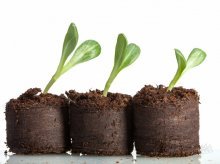
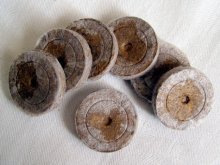
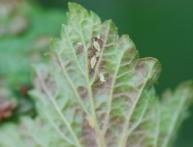
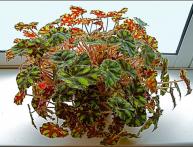
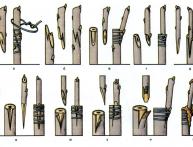
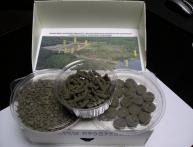


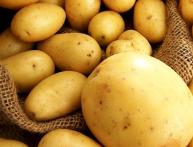
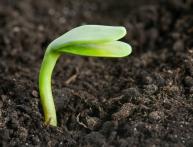
Comments
Peat humus tablets can be used not only when growing seedlings, but also when planting seeds directly into the ground. This year I found that the cucumbers did not grow well, and the daikon practically did not grow at all, meaning I lost time, and the garden area was left empty. I think that with peat humus tablets, the result would be much better.